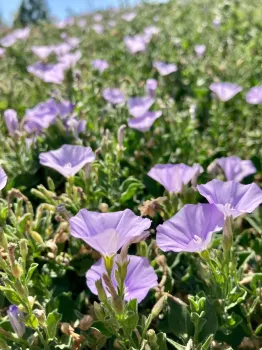
Tasks
- Consider removing groundcovers, turfgrass or annual flowers from little-used garden areas such as parking strips, medians or lawn “islands.”
- Cover bare soil with a layer of mulch. This reduces weeds and helps the soil retain moisture.
- Harvest vegetables and annuals regularly. Harvest apricots, berries, figs, plums and nectarines.
- Wash aphids and white flies off plants with water or insecticidal soap.
Pruning
- Deadhead annuals and perennials to encourage re-bloom. Prune lightly to avoid vigorous re-growth.
- Deadheading roses encourages reblooming.
Fertilizing
- Avoid fertilizing herbs as too much fertilizer reduces flavor and fragrance.
Planting
- Midsummer in the Valley is typically not the best time for planting. New plants struggle to get established in high temperatures, low humidity and intense sunlight.
Enjoy now
- Annuals and perennials: vinca (Catharanthus), cockscomb (Celosia), morning glory (Convolvulus), tickseed (coreopsis).
- Bulbs, corms, tubers: dahlia, fortnight lily (Dietes).
- Trees, shrubs, vines: bougainvillea, escallonia.
- Fruits and vegetables: blueberries, carrots, corn, cucumber.
Things to ponder
- Do not spray herbicides when daily temperatures exceed 100 degrees to prevent the spray from vaporizing.
- Protect neighboring plants with a cardboard shield when spraying herbicides.
- Watch for leaf drop, wilting or folded leaves which are the first signs of heat stress.
- Weeds compete with landscape plants for space, water and sunlight. Remove existing weeds by hand pulling, hoeing or the application of appropriate herbicides following label instructions. A 2-3” layer of mulch will suppress weed seed germination in the future and help conserve soil moisture.


